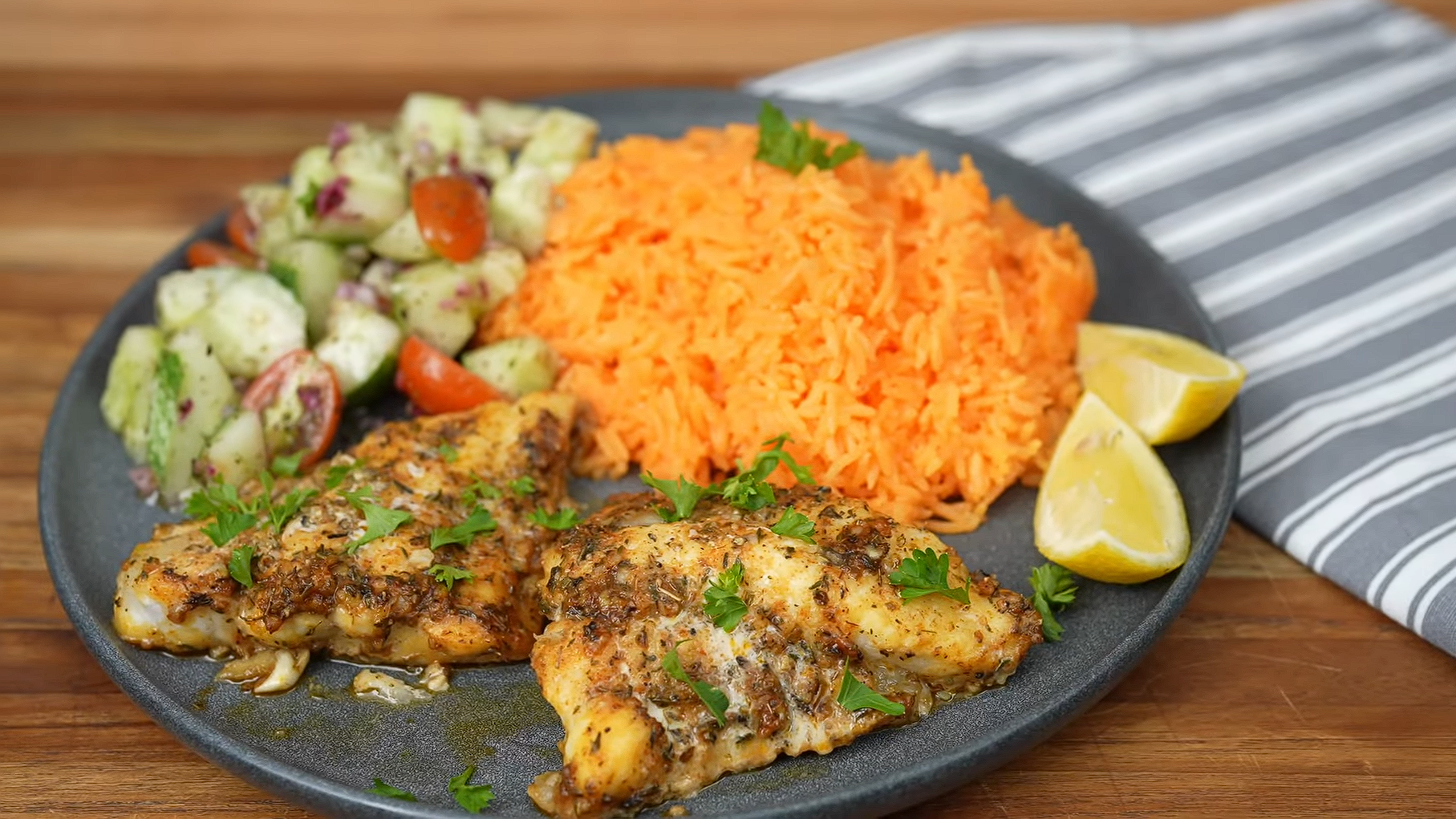Perfect Baked Catfish Fillets: A Simple Southern Classic with a Crispy Twist
When you think of soul-warming, Southern-inspired comfort food, catfish often comes to mind. Whether fried golden in a skillet or baked to tender perfection, catfish is a beloved staple across many homes. In this recipe, we’re focusing on a healthier, oven-baked approach that delivers all the flavor and crispness of the fried version, without the extra oil or fuss. If you’re searching for a foolproof way to enjoy catfish that’s juicy on the inside and crispy on the outside, this baked catfish fillet recipe will win you over from the very first bite.
Baked catfish doesn’t just offer a lighter take on the classic; it’s also incredibly easy to prepare. With the right blend of spices, a hint of lemon, and a perfectly balanced cornmeal crust, you can transform simple fillets into a weeknight dinner that feels restaurant-worthy. Whether you’re serving them up with coleslaw and hush puppies, sliding them into a sandwich, or topping them with a dollop of tartar sauce, these fillets offer versatility and flavor with every flake.
In this comprehensive guide, you’ll learn how to make baked catfish fillets that are crispy, flaky, and deeply satisfying. We’ll walk through the best ingredients to use, how to get that perfect crust, and even some tasty side suggestions. Let’s jump into the kitchen and get started.
Why You’ll Love This Recipe
- Healthier than fried catfish with the same crunch and flavor.
- Simple ingredients that are pantry-friendly and affordable.
- Quick and easy prep, ready in under 30 minutes.
- Customizable seasoning so you can make it spicy, mild, or zesty.
- Family-friendly, great for kids and adults alike.
Ingredients for Baked Catfish Fillets
Here’s what you’ll need to make four generous servings:
For the Catfish
- 4 catfish fillets (about 6 to 8 ounces each)
- 2 tablespoons Dijon mustard (or yellow mustard)
- 1 tablespoon lemon juice
- 1 tablespoon olive oil
- 1 teaspoon hot sauce (optional, for a spicy kick)
For the Seasoned Cornmeal Coating
- ½ cup cornmeal (fine or medium grind)
- ¼ cup all-purpose flour
- 1 teaspoon garlic powder
- 1 teaspoon paprika (smoked or sweet)
- ½ teaspoon onion powder
- ½ teaspoon salt
- ½ teaspoon black pepper
- ¼ teaspoon cayenne pepper (adjust to taste)
For Serving
- Fresh lemon wedges
- Tartar sauce, remoulade, or your favorite dipping sauce
- Fresh herbs like parsley or dill (optional, for garnish)
Choosing the Right Catfish
Catfish is known for its mild, slightly sweet flavor and firm texture, making it perfect for baking. If you’re shopping at the market, look for fillets that are:
- Fresh: They should smell clean, not overly fishy.
- Firm to the touch: Avoid fillets that are mushy or watery.
- Even in size: This helps with even cooking.
Both farm-raised and wild catfish work well, but wild catfish tends to have a stronger, earthier flavor.
Step-by-Step Instructions for Perfect Baked Catfish
Let’s walk through the full method, with details and helpful tips for every stage.
Step 1: Preheat the Oven
Start by preheating your oven to 425°F (220°C). A high temperature is key to getting the cornmeal coating nice and crispy without deep frying.
Place a wire rack on a baking sheet and spray it lightly with cooking spray. This helps air circulate under the fillets, giving you a golden crust on all sides.
Step 2: Prepare the Mustard Marinade
In a small bowl, mix together the Dijon mustard, lemon juice, olive oil, and hot sauce (if using). This marinade adds flavor and helps the cornmeal mixture stick to the fillets.
Pat the catfish fillets dry with paper towels. Then, brush the mustard mixture generously on both sides of each fillet. Let the fillets sit for 5 to 10 minutes while you prepare the coating. This quick marination adds depth of flavor.
Step 3: Mix the Cornmeal Coating
In a shallow dish, combine the cornmeal, flour, garlic powder, paprika, onion powder, salt, pepper, and cayenne.
Stir until well blended. The cornmeal gives the coating its signature crunch, while the spices add a smoky, savory flavor that enhances the mild taste of the catfish.
Step 4: Coat the Fillets
Working one at a time, press each fillet into the cornmeal mixture. Use your hands or a spoon to make sure the coating sticks to every part of the surface. Flip and repeat on the other side.
Once coated, place each fillet on the prepared wire rack. If you don’t have a wire rack, line your baking sheet with parchment paper and lightly oil it. Just note that the underside may not crisp up quite as much.
Step 5: Bake the Catfish
Place the tray in the preheated oven and bake for 15 to 18 minutes, depending on the thickness of your fillets. You’re looking for golden brown edges and an internal temperature of 145°F (63°C).
For extra crispiness, turn on the broiler for the last 2 to 3 minutes. Keep a close eye so the coating doesn’t burn.
Step 6: Serve Immediately
Remove from the oven and let the fillets rest for 1 to 2 minutes. Serve with lemon wedges, fresh herbs, and your favorite sauce.
Sides That Pair Beautifully
Baked catfish fillets pair well with classic Southern sides or lighter vegetable dishes. Here are some options to complete the meal:
Comfort Food Favorites
- Buttermilk mashed potatoes
- Creamy coleslaw
- Hush puppies
- Southern-style green beans
- Macaroni and cheese
Light and Fresh
- Steamed broccoli or asparagus
- Grilled zucchini
- Tomato cucumber salad
- Quinoa or wild rice
Sauces and Toppings
- Homemade tartar sauce
- Spicy remoulade
- Garlic aioli
- Dill yogurt sauce
Tips for the Best Baked Catfish
- Dry the fillets before coating: Moisture prevents the crust from sticking and crisping properly.
- Use a wire rack: It promotes airflow and prevents soggy bottoms.
- Don’t skip the mustard mixture: It adds flavor and helps bind the coating.
- Preheat the oven fully: A hot oven is critical for good texture.
- Customize your spices: Add lemon zest, Cajun seasoning, or even parmesan to the coating for a unique twist.
Variations and Additions
This recipe is a great base, but feel free to play around with flavors:
Spicy Cajun Style
Add 1 teaspoon of Cajun or Creole seasoning to the cornmeal blend. Serve with hot sauce and a corn salad.
Gluten-Free Option
Swap the all-purpose flour for a gluten-free blend or use more cornmeal. Be sure your mustard and hot sauce are also gluten-free.
Herb-Crusted
Mix in 1 tablespoon of chopped fresh parsley, dill, or basil into the coating for a bright herbal flavor.
How to Store and Reheat
If you have leftovers, here’s how to keep them tasting great:
- Storage: Store cooked fillets in an airtight container in the refrigerator for up to 3 days.
- Reheating: Reheat in the oven at 375°F for about 8 to 10 minutes until warmed through. Avoid the microwave if possible, as it can make the coating soggy.
- Freezing: You can freeze cooked catfish, but note that the crust may soften upon reheating. Freeze individually wrapped fillets for up to 2 months.
Frequently Asked Questions
Can I use frozen catfish fillets?
Yes, just make sure they are fully thawed and patted dry before coating and baking.
Can I substitute catfish with another fish?
Absolutely. Tilapia, cod, haddock, or swai are good alternatives for similar texture and flavor.
What if I don’t like mustard?
You can substitute with mayo or Greek yogurt mixed with lemon juice for a milder binding layer.
Why didn’t my coating get crispy?
Possible reasons include too much moisture on the fish, a low oven temperature, or overcrowding on the baking sheet. Make sure to follow the prep steps closely and use a hot oven.
Final Thoughts: Why This Recipe Belongs in Your Rotation
Perfect baked catfish fillets are more than just a meal—they’re a celebration of comfort, flavor, and simplicity. Whether you’re serving them up on a busy weeknight or preparing a Southern-style Sunday supper, these crispy fillets always deliver.
They strike that magical balance of being light but satisfying, crispy yet tender, flavorful without being fussy. With just a few pantry staples and a bit of prep, you can have a dish that feels special without spending hours in the kitchen.
Once you try this recipe, you’ll find yourself making it again and again—changing up the seasonings, trying new sides, maybe even turning it into fish tacos or sandwiches. It’s a flexible, family-friendly favorite that never disappoints.

